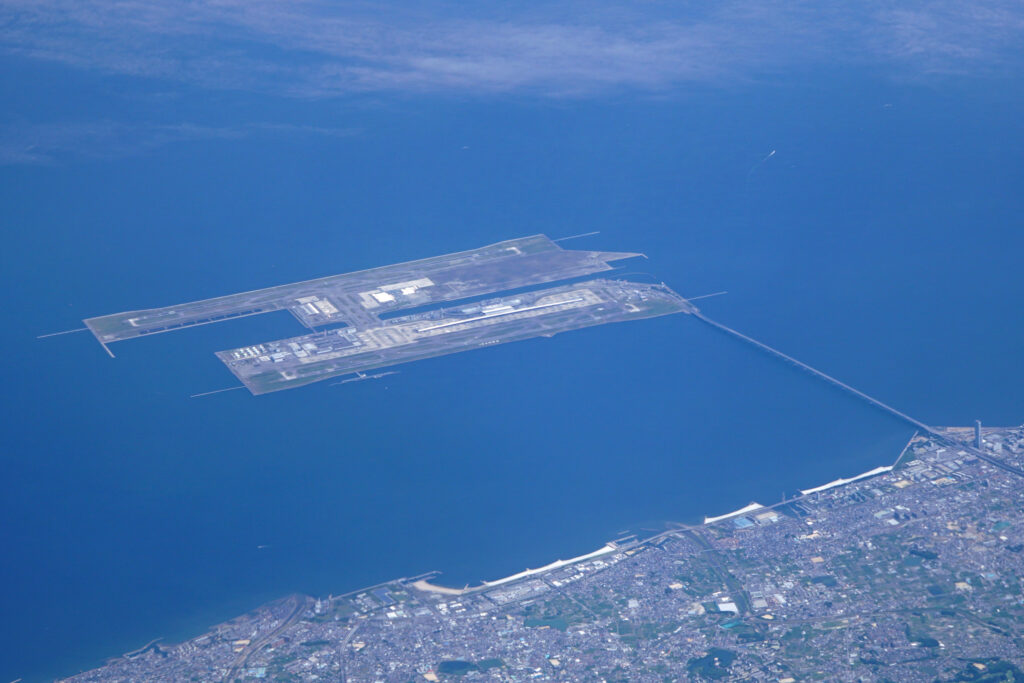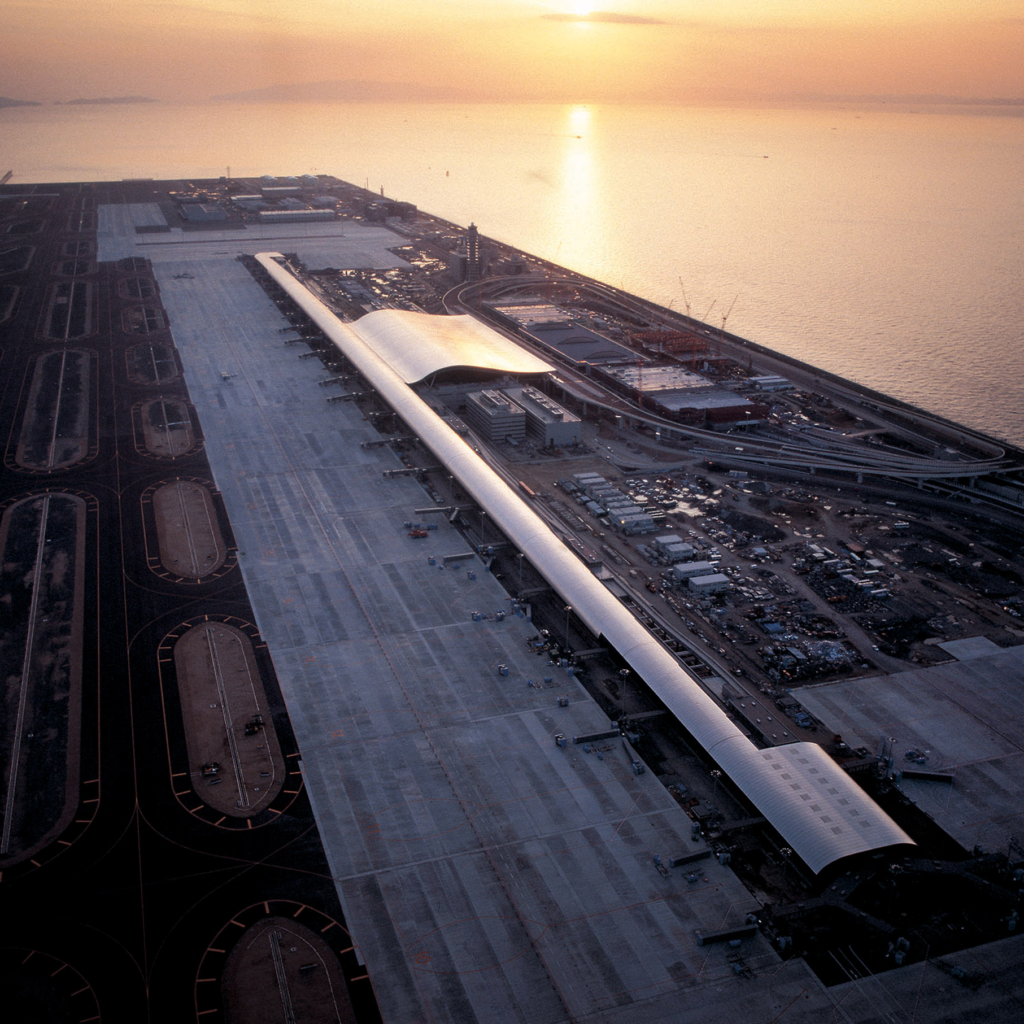JAPAN- Kansai International Airport (KIX), built on a damp Sponge artificial island, is sinking into the sea at an average pace of over one foot per year.
Kansai International Airport, near Osaka, Japan’s second-largest city, has progressively fallen 38 feet into the water since its inauguration three decades ago. Built atop two manmade islands in Osaka Bay, these platforms are gradually migrating away from the city core.

Kansai Airport is Sinking
According to sources from The Sun, there is rising worry that the airport, which serves carriers like as Japan Airlines (JL), Nippon Cargo Airlines (KZ), and All Nippon Airways (NH), may fall and reach sea level by 2056.
Initially, engineers expected the structures to sink to a level 13 feet above sea level after 50 years—a threshold judged necessary to prevent floodwater from breaking the airport’s seawall.
However, this predicted threshold was met in just six years. Subsequently, a remarkable £117 million was spent to elevate and reinforce the seawall. Nevertheless, it appears that the airport will continue to slide deeper into the ocean.

Challenges in Kansai Airport Construction
In 2018, Yukako Handa of Kansai Airports revealed that the land reclamation calculations for Kansai Airport took into account expected ground levels and subsidence estimations over 50 years.
The nature of the underlying terrain proved to be a considerable obstacle during airport building. The earth was described as like “a wet sponge,” requiring substantial drying and compression before building could begin.
Workers dropped about five feet of sand on top of the clay seafloor, then installed and filled 2.2 million vertical pipelines with sand. They then used the earth to build a solid foundation.
As the island began to sink toward the seafloor, construction crews took steps to alleviate the subsidence, including inserting additional plates and raising columns. Despite their attempts, it appears that the airport’s steady sinking may continue unabated.

Furthermore, the airport has regularly encountered inclement weather and natural disasters. In 2018, the catastrophic typhoon Jebi struck, briefly closing the airport and stranding hundreds of travelers.
As a result, Kansai has recently announced plans to perform earthquake and tsunami drills to ensure staff preparedness for crises.
Kansai experiences an annual influx of around 20 million tourists. Notably, it is the world’s first airport built on water.













Leave a Reply